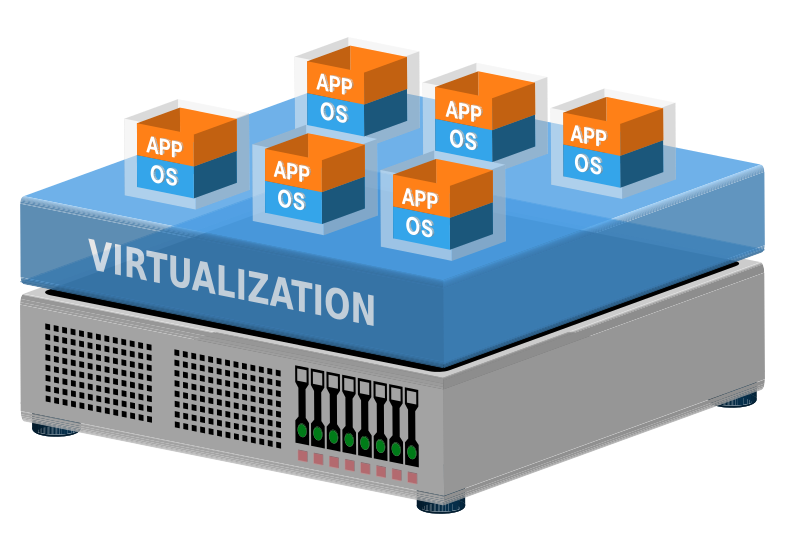Over the years there have been many different technologies to isolate workloads. Isolation is important for security because if one workload is compromised, and they are not isolated, then others can be affected. In today’s ecosystem, there are two predominant forms of workload isolation: containers and virtual machines.
Containers
Containers are similar to chroot jail in that all of the programs running within the container are executed in a way that they believe they have their own root file system. Linux namespaces allow the container to have its own process ID space, so `init` can be process ID 1, whereas, with chroot jails, the namespace was shared, so processes in the jail could not have a process ID of 1 since the host OS `init` process was already using process ID 1.
Containers share the same kernel and they do not have direct access to hardware resources.
Virtual Machines
Virtual machines are an emulated hardware environment provided by KVM. They boot their own kernel, have their own disks and attach network devices. If a user has full control over
a virtual machine, then they can install any operating system they wish. Because the hardware is virtualized and running a separate kernel, virtual machines provide greater isolation than containers since they do not share the same kernel. The isolation is provided by hardware optimizations implemented in silicon by CPU manufacturers. This makes
it more difficult to escape a virtual machine environment than a container environment. You might ask: But what about branch prediction attacks, like Spectre?
In this case, branch prediction attacks equally affect containers and virtual machines so we can exclude that as a consideration for choosing containers or virtual machines.
Root File System
In practice, the operating systems running within these isolation technologies both operate from their own root file systems. Traditionally this was a complete distribution installation, however, that has changed in a way that hinders security and increases the difficulty of systems administration. There is a trend of “turn-key” operating system deployments, especially in Docker. If you want a particular application, let’s say, a web server running Word Press, then you simply run a few short commands and your Word Press server is up and running. This makes it easy to install for the novice user, but there is no guarantee that the Docker environment is up to date.
Further compounding container deployment security is the fact that some containers do not have a complete root file system and administrators cannot log in at all. Some would say this is good for security, but this type of monolithic container is still subject to the increasing likelihood of new attack vectors against an aging codebase. If a vulnerability does come along, then the monolithic container can become compromised. Since it can be difficult to log into this kind of container, it is harder to inspect what is happening from within the environment– and even if you can log in, the installation is so minimal that the toolset for inspecting the problem is not available, and the deployment may be so old that even if the container includes a package manager like Yum or APT, the distribution repositories may have been archived and are no longer available without additional effort.
Container intrusions can often be inspected from the outside using a privileged installation with configurable tooling, but the security issues and increased difficulty of maintenance are a counterindication for today’s containerized counter culture.
Our recommendation is always to install a long-term support release of a well known distribution in a virtual machine instead of a container. As a full virtual machine, not only do you get increased isolation, vendor updates, and a better security life cycle, but you also get increased management tooling such as live migration, full block device disks that can be cloned and mounted on other systems or snapshotted with easy rollback.
If you must use containers for your environment, then please use a normal OS distribution, configure security updates and email notifications and centralized logging. This will go a long way to making the system maintainable in the future and save you support costs.
If you are interested in learning more, then call us for a free consultation, so we can help work out what is best for your organization.
-Eric

